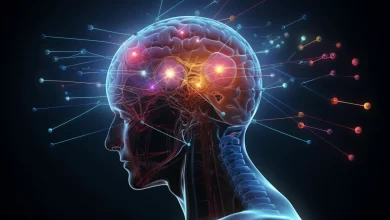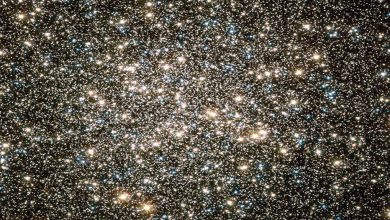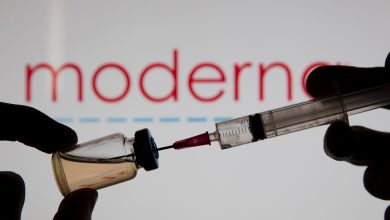Die Entdeckung der molekularen Struktur von Proteinen könnte die Fettverbrennung ankurbeln

[ad_1]

Wissenschaftler haben eine bedeutende Entdeckung zum Verständnis von Fettleibigkeit und damit verbundenen Krankheiten wie Diabetes gemacht. Die Forscher enthüllten die molekulare Struktur eines Proteins namens „Uncoupling Protein 1“ (UCP1), das dafür verantwortlich ist, dass braunes Fettgewebe Kalorien in Form von Wärme verbrennen kann, im Gegensatz zu herkömmlichem weißem Fett, das Kalorien speichert. Dies könnte zur Entwicklung von Behandlungen führen, die UCP1 künstlich aktivieren, um überschüssige Kalorien aus Fett und Zucker zu verbrennen und so möglicherweise Fettleibigkeit und Diabetes zu bekämpfen.
Forscher haben die molekulare Struktur des UCP1-Proteins aufgedeckt, das es braunem Fettgewebe ermöglicht, Kalorien in Form von Wärme zu verbrennen. Dieser Durchbruch könnte den Weg für Behandlungen ebnen, die UCP1 künstlich aktivieren und so Fettleibigkeit und Diabetes durch die Verbrennung überschüssiger Kalorien bekämpfen.
Ein Doktorand von St. Catharine und einer der Absolventen des Colleges sind Teil eines Forscherteams an der University of Cambridge und der University of East Anglia, das eine wichtige Entdeckung im Wettlauf um Behandlungsmöglichkeiten für Fettleibigkeit und damit verbundene Krankheiten wie Diabetes gemacht hat.
Scott Jones schließt seine Doktorarbeit an der MRC Mitochondrial Biology Unit der Universität Cambridge ab und ist der Erstautor der neuen Studie, die zum ersten Mal die molekulare Struktur eines Proteins namens „Uncoupling Protein 1“ (UCP1) enthüllte. Dieses Protein ermöglicht es braunem Fettgewebe oder „gutem Fett“, Kalorien in Form von Wärme zu verbrennen – im Gegensatz zu herkömmlichem weißem Fett, das Kalorien speichert.
Scott sagte: „Die Aufklärung der Struktur des menschlichen Entkopplungsproteins war der Schwerpunkt meiner Doktorarbeit, daher freue ich mich, dass die Struktur nun veröffentlicht wird und es uns ermöglicht, besser zu verstehen, wie das Protein funktioniert und reguliert wird.“
Alumnus Dr. Martin King (2002, Naturwissenschaften) arbeitet ebenfalls an der MRC Mitochondrial Biology Unit der Universität Cambridge und war Co-Autor des kürzlich in der Zeitschrift veröffentlichten Artikels

The human uncoupling protein in brown adipose tissue in its inactive form (left), inhibited by a nucleotide, and in its activated form (right), which short-circuits the mitochondrion to produce heat. Credit: Penn Medicine
Dr. King explained, “This has been a long-term project (spanning more than 10 years) and is a great example of how fruitful collaborations in science can be. Each lab has its own expertise that has been essential in solving this problem.”
These findings provide crucial molecular details that will help develop therapeutics that activate UCP1 artificially to burn off excess calories from fat and sugar. And that this could one day combat obesity and related diseases, such as diabetes.
Dr. Paul Crichton from the University of East Anglia said:
“As well as the conventional white fat that we are all familiar with, we can also develop brown fat. Brown fat is the good fat – it breaks down blood sugar and fat molecules to create heat and help maintain body temperature. Most of our fat, however, is white fat, which stores energy – and too much white fat leads to obesity. UCP1 is the key protein that allows the specialized brown fat to burn off calories as heat.
“We know that mammals switch on UCP1 activity in brown fat tissue to protect against the cold and to maintain body temperature – especially in new-borns, that cannot yet shiver to keep warm. Brown fat varies in humans, where it correlates with leanness in the population – and there has been a lot of interest in how to increase brown fat and activate UCP1 therapeutically, as a potential way to treat obesity.
“A lot of research has been focusing on finding ways to encourage brown fat and how to turn white fat into brown fat – in order to burn more calories and fight metabolic disease. But even with more brown fat – UCP1 must still be ‘switched on’ to gain full benefit. And research has been hampered by a lack of details on the molecular makeup of UCP1. Despite more than 40 years of research, we did not know what UCP1 looks like to understand how it works – until now.”
Using the Krios G3i, a cryogenic electron microscope at the Penn Singh Center for Nanotechnology, the team was able to view UCP1 in atomic detail.
Lead researcher from the University of Cambridge, Professor Edmund Kunji, said:
“Our paper reveals, for the first time, the structure of UCP1 in atomic detail, and how its activity in brown fat cells is inhibited by a key regulatory molecule. Our work shows how a regulator binds to prevent UCP1 activity, but more importantly, the structure will allow scientists to rationalize how activating molecules bind to switch the protein on, leading to the burning of fat. The activated tissue can also remove glucose from the blood, which can help control diabetes. This is a significant breakthrough in this field.”
For more on this research, see The Breakthrough That Could Lead to New Obesity Treatments.
Reference: “Structural basis of purine nucleotide inhibition of human uncoupling protein 1” by Scott A. Jones, Prerana Gogoi, Jonathan J. Ruprecht, Martin S. King, Yang Lee, Thomas Zögg, Els Pardon, Deepak Chand, Stefan Steimle, Danielle M. Copeman, Camila A. Cotrim, Jan Steyaert, Paul G. Crichton, Vera Moiseenkova-Bell, Edmund R. S. Kunji, 31 May 2023, Science Advances.
DOI: 10.1126/sciadv.adh4251
This research was supported by the Medical Research Council, the Biological and Biotechnological Sciences Research Council, and by the National Institutes of Health/National Institute of General Medical Sciences. Nanobody discovery was funded by the Instruct-ERIC part of the European Strategy Forum on Research infrastructures, and the Research Foundation – Flanders, and the Strategic Research Program of the Vrije Universiteit Brussel.
[ad_2]
Source link




